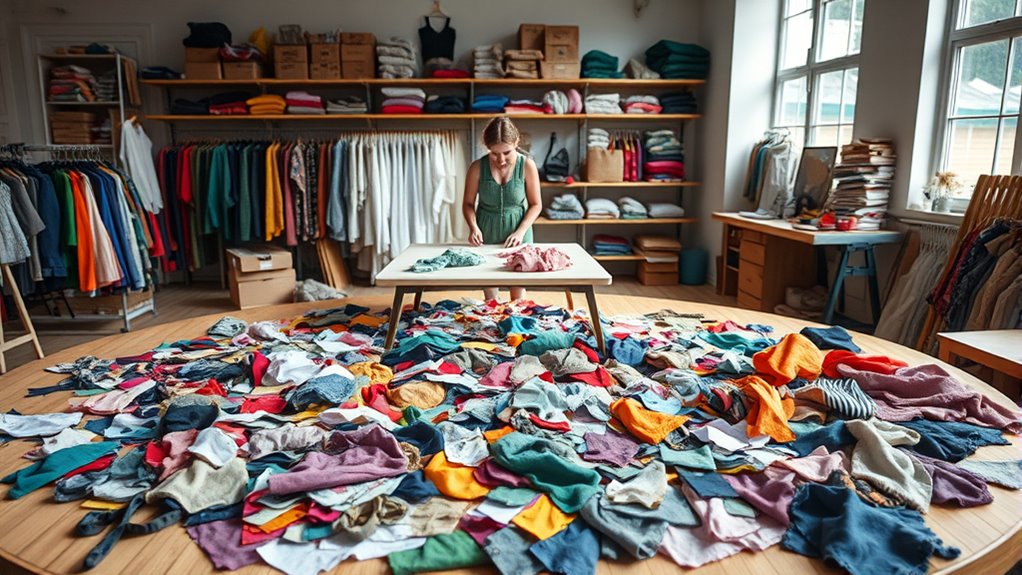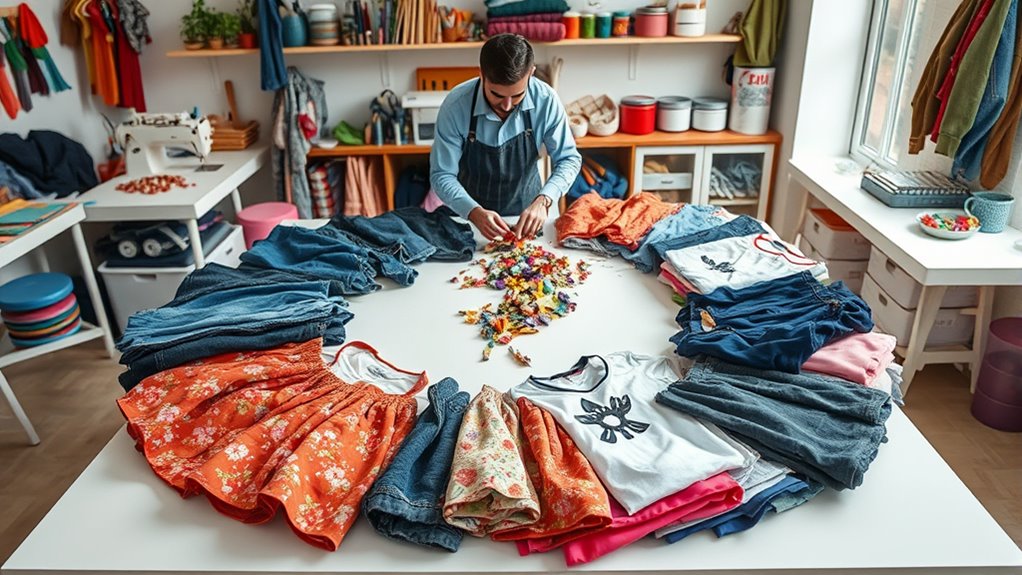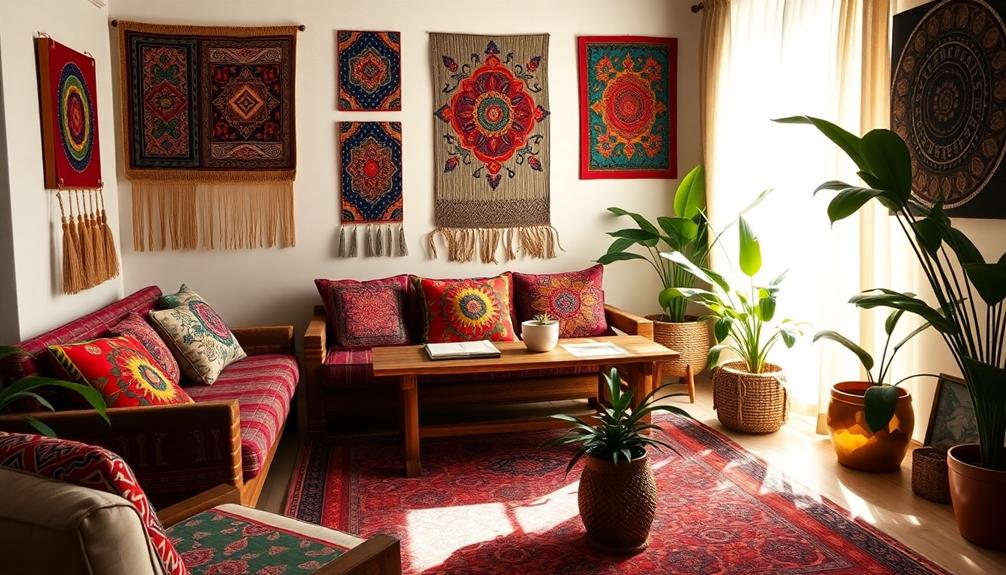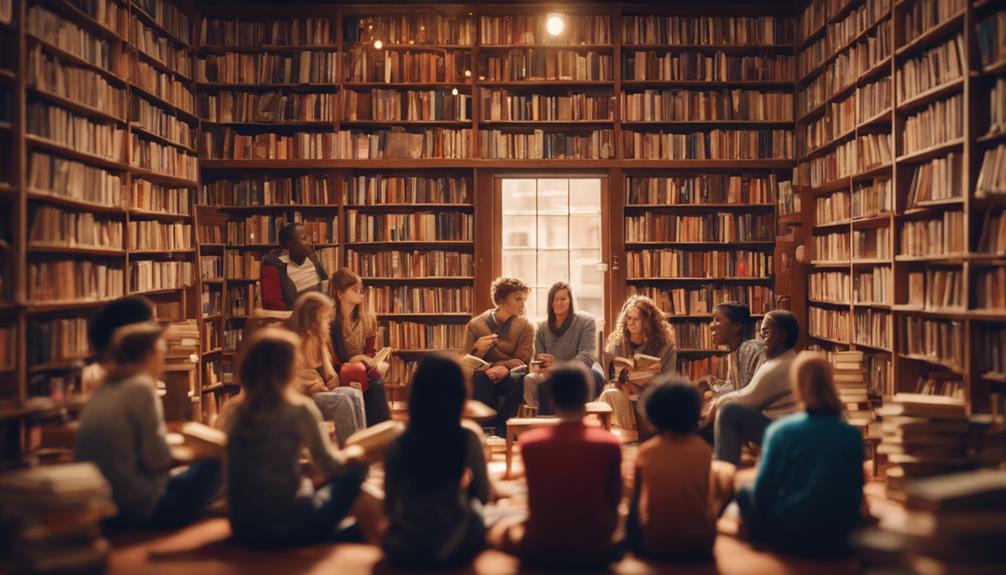Circular fashion transforms your old clothes into new collections by brands focusing on sustainability and waste reduction. They do this by sourcing eco-friendly materials, designing garments for recycling or repairing, and using innovative production methods. Take-back programs and recycling initiatives help extend each piece’s life, reducing landfill waste. As brands embrace transparent supply chains and ethical practices, they create fashion that’s responsible and stylish. If you want to see how this change happens, keep exploring how brands turn old clothes into fresh collections.
Key Takeaways
- Brands collect old clothes through take-back or recycling programs to create new collections.
- They utilize eco-friendly materials and recycling technologies to transform waste into new textiles.
- Design for recyclability enables garments to be easily disassembled and repurposed.
- Circular supply chains prioritize transparency, ethical sourcing, and minimal environmental impact.
- Consumers are encouraged to participate in repair, reuse, and recycling efforts to extend garment lifespan.

Circular fashion is transforming the way we think about clothing by emphasizing sustainability and waste reduction. Instead of the traditional linear model—where clothes are made, worn, and discarded—circular fashion encourages brands to rethink their entire process, from sourcing materials to end-of-life management. One key aspect is establishing sustainable supply chains that prioritize transparency, ethical practices, and minimal environmental impact. When you choose brands committed to circularity, you’re supporting systems that reduce resource extraction, lower carbon footprints, and promote fair labor practices. These brands often work with eco-friendly materials, such as organic cotton, recycled polyester, or innovative fabrics made from plant fibers, ensuring that every step in their supply chain aligns with environmental values.
Circular fashion prioritizes sustainable supply chains and eco-friendly materials to reduce environmental impact and promote ethical practices.
As you explore circular fashion, you’ll notice how brands are reimagining traditional production methods by integrating eco-friendly materials into their collections. These materials are carefully selected not only for their durability and comfort but also for their low environmental footprint. For instance, recycled textiles are derived from post-consumer waste like plastic bottles or old garments, giving new life to what would otherwise be waste. Similarly, bio-based fabrics, such as hemp or Tencel, are cultivated with fewer chemicals and water, making them more sustainable options. When brands incorporate these eco-friendly materials, they reduce reliance on virgin resources and help close the loop in the fashion lifecycle. Additionally, many brands are adopting innovative recycling technologies that further enhance their sustainability efforts.
You’ll also find that brands committed to circular fashion invest heavily in creating sustainable supply chains. This means sourcing raw materials responsibly, ensuring ethical labor practices, and maintaining transparency throughout every stage. Such supply chains prioritize local suppliers when possible, reducing transportation emissions and fostering community development. By doing so, they minimize waste and energy consumption, making the entire process more environmentally friendly. This holistic approach encourages a shift away from fast fashion, promoting instead a model where clothes are designed to be recycled, repaired, or repurposed.
When you support brands with sustainable supply chains and eco friendly materials, you’re actively participating in a movement that values longevity over disposability. These brands often implement take-back programs, repair services, or recycling initiatives, giving garments a second life. This not only reduces waste but also promotes a conscious consumption mindset. Circular fashion isn’t just about trendy looks; it’s about creating a system where every piece of clothing has a purpose, from production to disposal. By understanding and choosing brands committed to these principles, you help accelerate the shift toward a more sustainable and responsible fashion industry.
Frequently Asked Questions
How Do Brands Source Sustainable Materials for Recycling?
You can source sustainable materials for recycling by leveraging advanced recycling technology that breaks down old garments into raw materials. Brands often collaborate with suppliers who prioritize eco-friendly raw material sourcing, ensuring fibers are renewable and ethically obtained. By focusing on innovative recycling methods and choosing suppliers committed to sustainability, you help create a closed-loop system where old clothes transform into new, high-quality collections, reducing waste and environmental impact.
What Are the Costs Involved in Circular Fashion Initiatives?
You might be surprised to learn that embracing circular fashion involves more than just good intentions. The cost analysis reveals investment requirements in specialized equipment, sustainable materials, and supply chain adjustments. While these costs can seem high initially, they often lead to long-term savings and brand loyalty. By understanding these expenses, you can better appreciate how brands turn old clothes into fresh collections, making eco-friendly choices more accessible.
How Do Consumers Participate in Circular Fashion Programs?
You can actively participate in circular fashion programs by engaging with brands that offer take-back schemes or recycling initiatives. Your participation incentives might include discounts, loyalty points, or exclusive access to new collections. Consumer engagement is vital; by recycling or donating old clothes, you help reduce waste and support sustainable practices. Your involvement not only benefits the environment but also encourages brands to continue developing innovative, eco-friendly fashion options.
What Challenges Do Brands Face in Implementing Circular Designs?
Brands battle barriers like supply chain hurdles and limited consumer awareness when implementing circular designs. You’ll find that sourcing sustainable materials and establishing eco-friendly processes complicate production, while educating consumers about circular fashion’s benefits proves tricky. Overcoming these obstacles requires innovation and inspiration, but the payoff is a more sustainable, stylish future. You can help by supporting brands that prioritize circularity and spreading awareness of its importance.
How Does Circular Fashion Impact Overall Environmental Sustainability?
You see, circular fashion considerably boosts environmental sustainability by reducing textile waste and lowering your carbon footprint. When brands reuse and recycle clothes, less waste ends up in landfills, conserving resources. This approach also cuts emissions from production and transportation. By supporting circular fashion, you help promote a more sustainable industry, ensuring a healthier planet for future generations while enjoying stylish, eco-friendly clothing options.
Conclusion
Now that you’ve glimpsed the magic of turning old into new, remember, you hold the power to rewrite fashion’s story. Like a skilled artist, you can transform discarded threads into vibrant masterpieces, weaving sustainability into every stitch. Embrace this circular dance, where waste becomes wonder and fashion circles back with purpose. Together, we can spin a brighter, greener future—one recycled garment at a time—creating a world where style and sustainability dance hand in hand.










